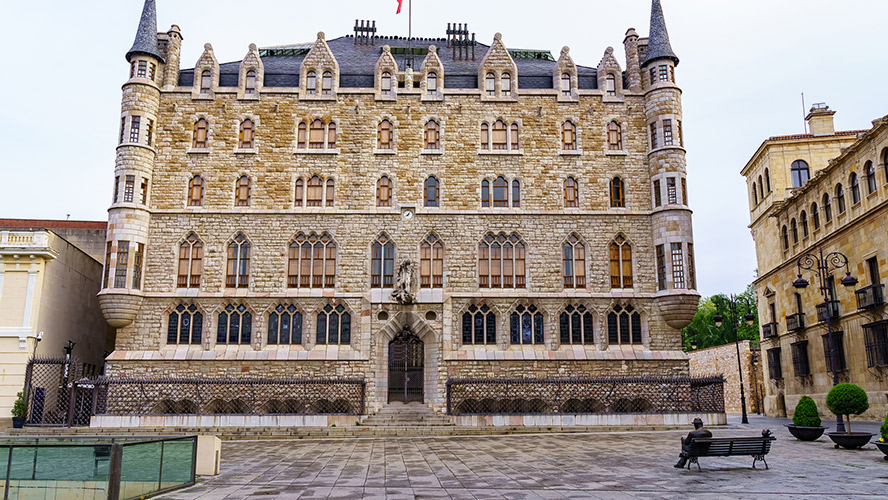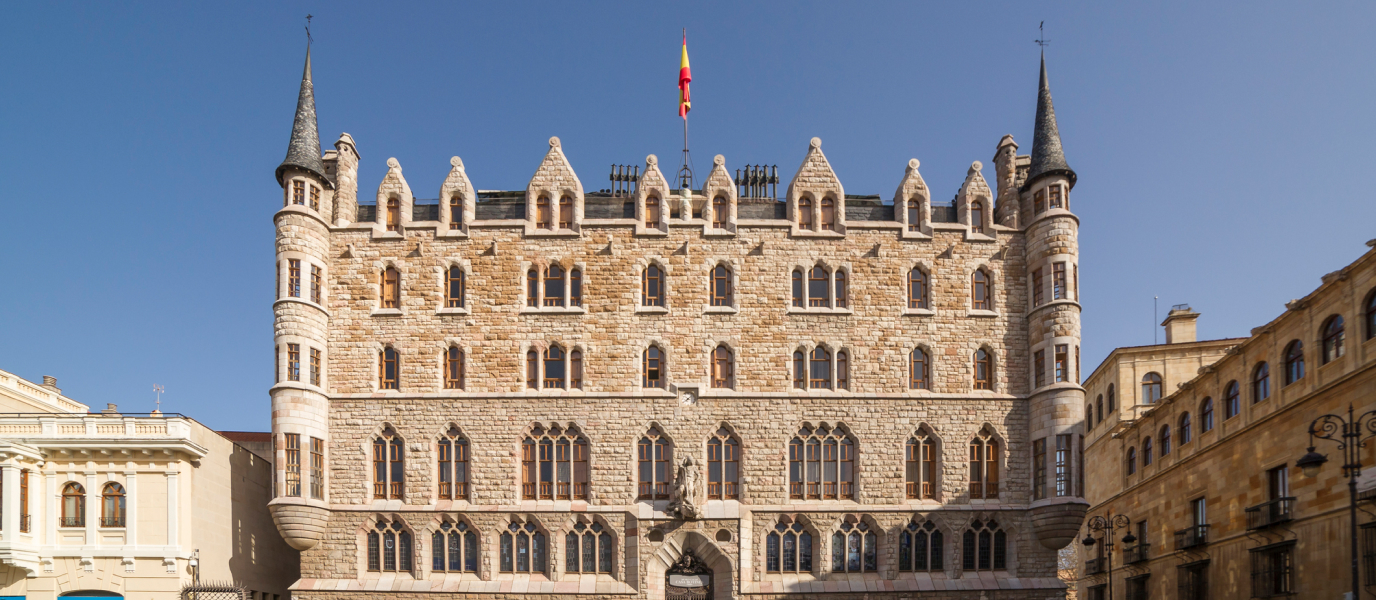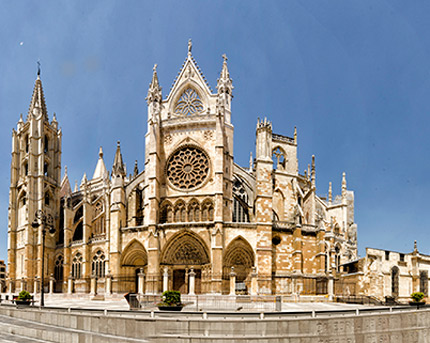León is one of the most stately historic cities in Spain to stroll around and visit. Its layout reveals a history marked by Romanesque, Gothic, Renaissance, Plateresque and even Modernist monuments. Centuries of art fill its narrow streets and crowded squares.
During one of those transformations, from the capital of a kingdom to a key city on the pilgrimage route to Santiago de Compostela, the Guzmanes Palace was created as a result of the endeavour of a very influential noble family from León who fought to build a beautiful Renaissance building, including both the walls and the past.
The building is very close to the Casa de Botines Museum, the great modernist work by Antonio Gaudí, and emerges as a mirror in which, centuries later, the desires of a city accustomed to the monumentalism of its corners are reflected. However, it is not enough just to admire its serene façade, you must also enjoy its interior.
History of the Guzmanes Palace
The Guzmanes Palace began construction around 1560. The family of Juan de Quiñones y Guzmán, the then bishop of Calahorra, commissioned the master builder Rodrigo Gil de Hontañón to design a new modern building that would represent the enormous influence that the Guzmán family then had in 16th century León.
In fact, the new palace was to be built on top of the old Mudejar Gothic building owned by the family. However, the space freed up by the demolition was not sufficient for the trapezoidal Renaissance design and the Guzmán family had to ask permission from the municipality to also occupy part of the old wall and change the layout of some of the adjacent streets.
With all the permits in place, work on the new palace began with the removal of stones and it took more than six years to erect the main façade in 1566.
The new palace was to emerge before its citizens with all the majesty of the Renaissance, but also changing the layout of part of the centre of León. The ‘inconvenience’ to the neighbours did not end there: in 1586 and 1587, the family managed to take over some of the nearby houses and demolished them in order to continue with their work and enlarge the square planned just in front of the new villa of the Guzmanes.

In 1572, part of the work finally had to be halted, leaving some areas unfinished but housing the descendants of the bishop of Calahorra.
However, a half-finished palace and the cruel passage of time caused its deterioration, which continued for three centuries, until 1882, when the Provincial Council of León acquired and restored it.
Curiously, the building’s design was not completed until 1977, when a major extension was made to the building so that it could be used as the Provincial Council’s official headquarters.
Architectural style of the Guzmanes Palace
The Guzmanes Palace is built in Renaissance style on a trapezoidal plan around an interior courtyard and flanked by four towers.
One of the building’s highlights is its façade, where there is a 16th century doorway, escorted by Ionic columns and crowned by two statues of soldiers holding the Guzmán family’s coat of arms.
It has three floors where, in addition to the doorway, the first floor has balconied windows, topped with triangular and semicircular pediments, and a stately balcony in the centre.
On the third floor, the most remarkable feature is a gallery of glazed arches, separated by Corinthian pilasters, which rise up to the towers.
The interior, also in Renaissance style, is notable for its cloister, with a decorative well in the centre, an interior courtyard and a noble staircase. There are also beautiful stained glass windows surrounding the arcades on the first floor.

Planning your visit
The Guzmanes Palace opens from Wednesday to Sunday. In the summer (April to September) it can be visited from 10.30 a.m. to 6.15 p.m., and in the winter (September to March) from 11.30 a.m. to 5.00 p.m.
You can visit the rooms on a guided tour by buying a ticket up to five minutes before the start of the tour. Ticket prices range from two euros for a normal visit to three euros if you also visit the Plenary Hall.
Where to stay in León
León is a city with a broad and varied accommodation options, but the historic centre is still the favourite area for those who want to immerse themselves in the magic of its narrow streets. The four-star Barceló León Conde Luna is a perfect choice because it is located just 300 metres from the Guzmanes Palace and a five-minute walk from the Cathedral.
It is also home to two of León’s most iconic restaurants: Nimú Azotea, located on the tenth floor of the hotel, and Casa Mando.
Just as close is the four-star Occidental León Alfonso V, also located less than 200 metres from the palace. The building’s architecture is striking thanks to an impressive interior dome that rises from the reception to the eighth floor.







































































